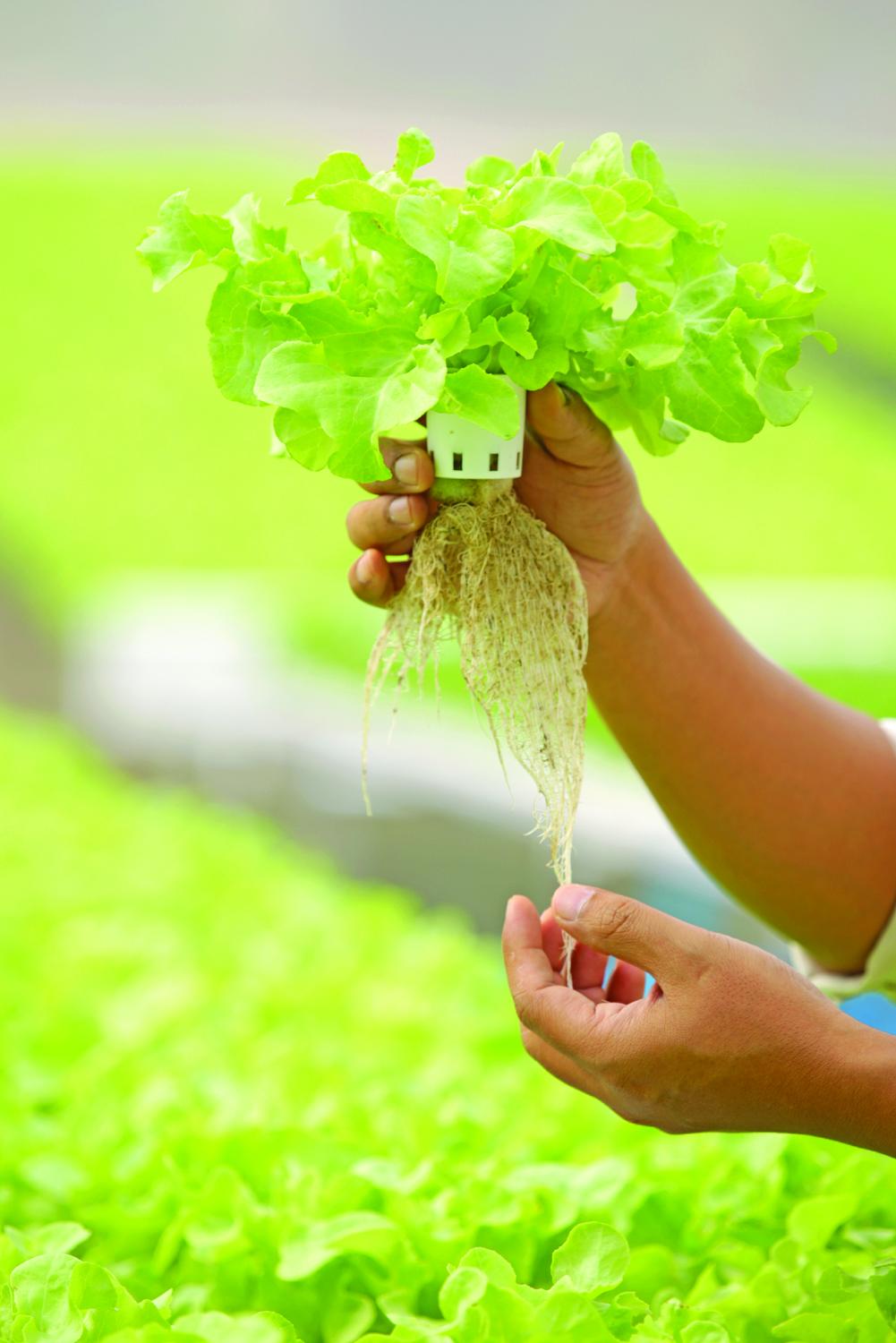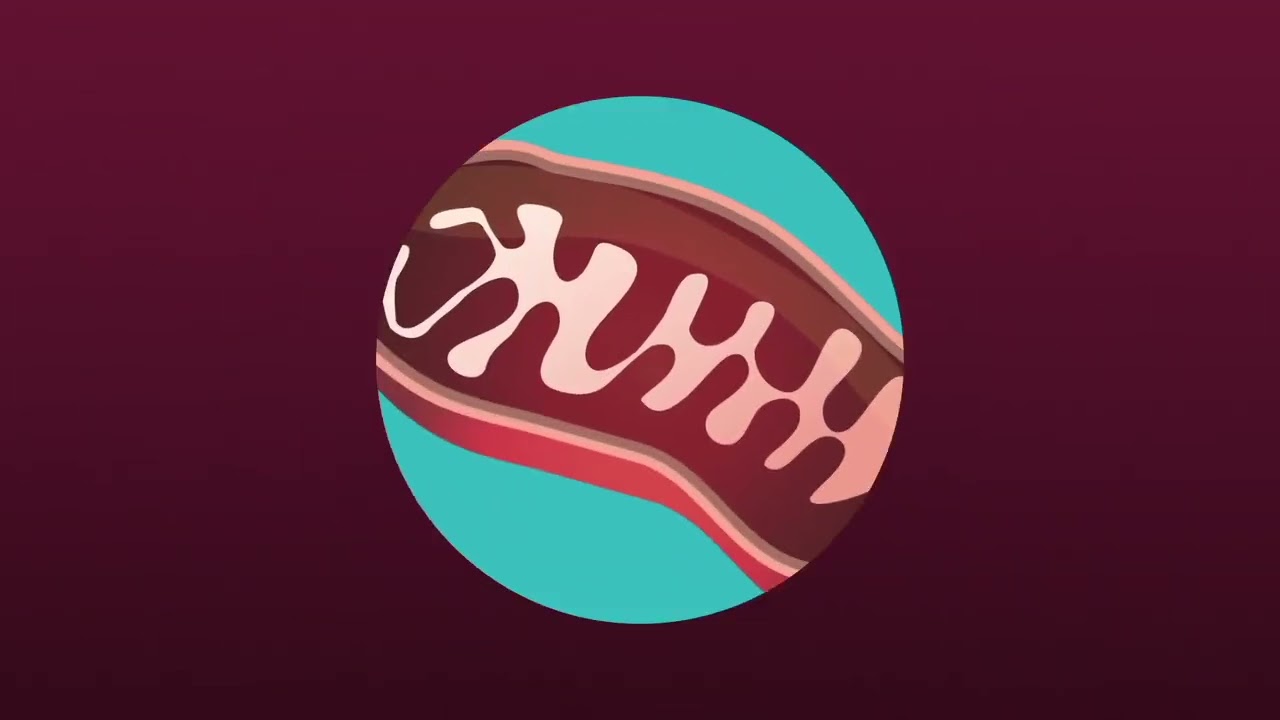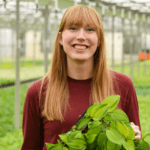
Hydroponics & Nutrient Application
Hydroponics is a method of growing plants in the absence of soil, fulfilling the notion that mineral nutrients can be delivered to plants more effectively through the use of a nutrient solution. Hydroponic solutions must be carefully monitored, as the amount of nutrients delivered to the plant will dictate its fertility and longevity. The method in which solution concentration is determined is through the measurement of electrical conductivity.
Defining and Measuring EC
Electrical conductivity (EC) is the ability of a solution to carry an electrical current. It follows that the higher the current obtained, the greater the conductivity. There can be many dissolved solids in a solution, but it is the dissolved salts that are the main contributors to a solution's conductivity. When salts dissolve in a solution, they dissociate into positively and negatively charged ions, both of which effectively carry a current. The dissolved salts of interest in a nutrient solution include potassium, calcium, phosphate, nitrate and sulfate, most of which are added to water to create a fertilized solution. In hydroponics, an EC measurement can be used as an indicator of how many dissolved salts are present, and thus the corresponding strength of a nutrient solution.
The most common conductivity meter used in hydroponics is the two-pole sensor. This technology offers a limited range but is relatively inexpensive. The two-pole sensor is also known as an amperometric measurement. The way that this type of conductivity meter operates is through applying an alternating voltage to the two electrodes. The amount of current that can be carried between these two electrodes is based on the salts present in the solution; higher salt concentration equals more current. Other technologies, including the four-pole or potentiometric sensor, are available and offer a wide range of measurement, but are typically more expensive.
Nutrient Solution Basics
It is important to understand the base nutrient levels in a solution before adding supplemental nutrients. If there is an excess amount of nutrients in solution, plants can experience fertilizer burn. Fertilizer burn can result in the browning and wilting of plant leaves, and can ultimately lead to plant death. Osmosis is the main cause of fertilizer burn, occurring when there is a difference in salt concentration between the inside of the plant roots and the nutrient solution. When the nutrient solution has a higher concentration of salts compared to what is naturally present in the roots of the plant, water will move out of the plant roots, causing it to dehydrate and burn. This is easily seen when someone fertilizing a lawn has added too much fertilizer, causing the grass to die; the fertilizer depleted the water that was needed for the grass.
Since the conductivity of a nutrient solution is related to the concentration of dissolved solids present, conductivity readings can also be expressed as total dissolved solids (TDS). The measurement of TDS indicates the amount of ions dissolved in a solution. In terms of hydroponics, TDS specifies the salt concentration and strength of a nutrient solution. A true mass measurement of TDS is determined by a gravimetric analysis. However, an estimated measurement of TDS can more quickly and simply be extrapolated from an EC measurement.
Conductivity measurements can be expressed in units of microsiemens per centimeter (µS/cm) or millisiemens per centimeter (mS/cm). A simple conversion can be done to relate the two units of measurement; 1,000 µS/cm is equal to 1.0 mS/cm. Typical EC values for hydroponic nutrient solutions can range from 500 to 2000 µS/cm, or 0.5 to 2 mS/cm. TDS measurements can be expressed in units of parts per million (ppm) or parts per thousand (ppt). In terms of conversion, a reading in µS/cm will be expressed in units of parts per million (ppm), while a reading in mS/cm will be expressed as parts per thousand (ppt).
Since TDS is not a direct measurement, the conversion factor used is based on the type of solution being measured. The conversion factors of 0.5 and 0.65 are most commonly used in TDS meters available in the market. The 0.5 conversion factor is based on a sodium chloride solution. While sodium chloride will completely disassociate in water into sodium ions and chloride ions, other salts such as magnesium sulfate will not completely disassociate and will not be detected by an EC or TDS meter. For this reason, a higher conversion factor is needed to compensate for the salt that does not fully disassociate in water. A conversion factor between 0.65 and 0.70 is the best estimate of the salts present in fertilizer that do not disassociate.
To relate EC and TDS readings, simply multiply the EC value (µS/cm) by the conversion factor to get the TDS value (ppm). For example, a 1000 µS/cm reading on an EC meter will read 500 ppm on a TDS meter with a 0.5 conversion factor and 650 ppm on a TDS meter with a 0.65 conversion factor. Many TDS meters are either pre-programmed with the conversion factor or available with an adjustable conversion factor. In either case, it is important to ensure the conversion factor of the meter matches the factor recommended by the fertilizer manufacturer.
EC and TDS measurements are affected by temperature. As temperature of a solution increases, the movement of ions increases and there is a resulting increase in conductance, and vice versa. Therefore, it is important to compensate for temperature in order to obtain accurate measurements. Generally, a factor of 2 percent per degree Celsius is used for a temperature coefficient and is based at 25¡ C; this means that for every change in degree Celsius, the meter will multiply the absolute reading by 2 percent and add or subtract accordingly before displaying the adjusted reading. For example, a meter with automatic temperature compensation (ATC) will read 1000 µS/cm at both 25 and 26¡ C because it is accounting for the variation in ion movement due to temperature. A meter without ATC or no temperature compensation coefficient will read 1000 µS/cm at 25¡ C and 1020 µS/cm at 26¡ C. Conductivity meters are available in the market with either an adjustable or fixed temperature compensation coefficient. There are also meters available that have an exposed temperature probe, allowing for faster response times due to the quick evaluation of temperature for compensation.
Accuracy is Vital
Performing a reliable calibration and sufficient cleaning of EC and TDS meters is necessary to ensure all readings are accurate. EC and TDS readings are only going to be as precise as the standards used for calibration, so it is necessary to periodically calibrate in a known standard. Prior to calibration, it is critical that the sensor is clean and no salts are present. The probe should be rinsed in water that has been
distilled or purified by reverse osmosis. The EC or TDS standard should always be fresh since the slightest contamination will change the value. Solutions can be packaged in either bottles or sachets. Sachets are more reliable and convenient since they are one-time use; the sachets are always as fresh as the day they were produced, ensuring that the solution is consistent with the value on the label.
To achieve an accurate EC or TDS reading in a hydroponic nutrient solution, there are many factors that must be considered. Of paramount importance is the ability of a meter to compensate for temperature during measurement. The relationship between EC and temperature is highly variable, and must be taken into account during both calibration and measurement; this can be easily achieved by using a meter with automatic temperature compensation. Many growers may be more familiar with using TDS as a means of understanding their nutrient solution; in these cases, having a meter that allows for a conversion factor to accurately relate EC to TDS is essential. Meters with adjustable EC/TDS conversion factors are advantageous in that growers can adjust them based on the factors reported by the fertilizer manufacturer. By understanding the factors that contribute to the conductivity of a nutrient solution, as well as the means by which conductivity is measured, growers can continue monitoring and maintaining their solutions with confidence.
Hydroponics & Nutrient Application


 Video Library
Video Library 




















